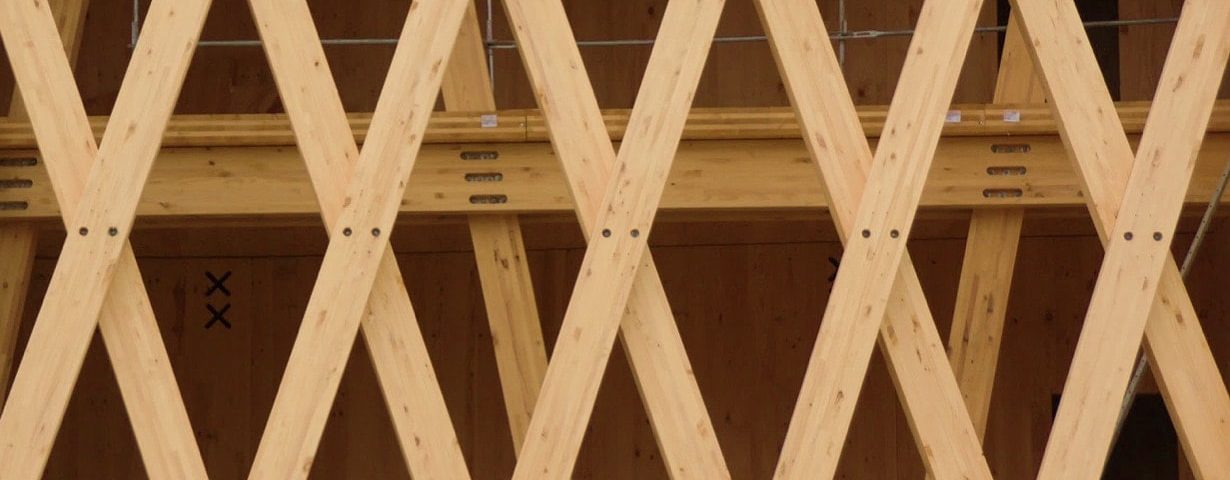
Local Renewable Resources in the Face of Global Climate Change: The Impulso Verde Building
09 of June of 2021
Cities currently produce more than two-thirds of global greenhouse gas emissions, which is why they are considered largely responsible for global warming. The urgent need for a paradigm shift in how we design, build, and live in our cities to drastically reduce their carbon footprint is now commonplace.
In this regard, the EU has established a very ambitious plan: achieving carbon neutrality by 2050 and reducing emissions to less than half in just ten years. To this end, it has defined different strategic priorities, such as decarbonizing energy sources, reducing consumption, creating natural sinks, and promoting the bioeconomy and carbon-neutral technologies compatible with circular economy models. The road map is drawn out. We know what has to be done. However, the challenge we’re facing in the coming years is how to do it.
What are green buildings?
The value and mass use of local natural and renewable resources in building new cities is one way of approaching the proposed paradigm shift, and it is perfectly aligned with the strategies established by the EU.
Green buildings are sustainable structures that use natural materials that reduce and optimize the consumption of resources like electricity or water. Integrating them into the environment aims to produce the least possible impact and the greatest comfort for their inhabitants.
The most outstanding characteristics of green buildings are:
- Integration with the environment where they are located, aiming not to alter those surroundings.
- The materials for the construction process must have the lowest toxic and pollutant effects possible.
- They must have the lowest expenditure of resources possible. These energy sources must also be renewable. They should minimize water consumption during the process as well, or utilize a recycling system for it.
A key component is that the well-being of the building’s inhabitants must be taken into account, not only in terms of comfort but also for health and safety.
Building Impulso Verde and the Life Lugo + Biodinamico project
We already have an example of this approach in Spain. It is being carried out in the city of Lugo through the Life Lugo + Biodinamico Project. The project, which is co-financed by the EU through the Life Program, is spearheaded by the Lugo Council. It has participation from the Lugo Provincial Council, the University of Santiago de Compostela, and the Technical University of Madrid. Through it, a model of sustainable urbanism based on different strategies is proposed. This includes promoting the widespread use of local wood in construction, incorporating forestry and agriculture into the urban environment, and the revaluation and protection of spaces of high environmental value.
The project’s area of action covers an area of about 40 ha. Of these, approximately half are for steps related to plant life, such as planting crops for the production of bioenergy, the forestry of native hardwoods to obtain quality wood, creating a forest of traditional autochthonous species as an educational space and for strengthening biodiversity, or conserving a wetland. The other half are for the project of a new neighborhood, which was conceived as an urban village where the land’s footprint is minimized and where urban agriculture, the use of vegetation, renewable energies, and residential structures of average height made from wood – a multi-ecological neighborhood – is encouraged. Although the emergence of the new neighborhood is outside the project’s time horizon, construction is currently being done on a pilot building and the surrounding residential development as an anticipatory step for what the new neighborhood will be.
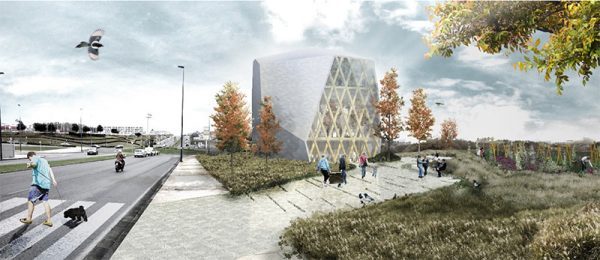
The building, called the Impulso Verde, will be surrounded by a new educational park with draining pavements, native species, rain gardens, and a large area of urban community gardens where social cohesion and self-consumption can be strengthened. The building plan, which is distributed over four floors, will house municipal services, a co-working space for companies working in environmental fields, an exhibition area, and an environmental training classroom.
How is this “green” project being built?
From a material point of view in the building’s design, we opted for zero-kilometer materials such as wood and slate, widely used in traditional construction in Galicia (the Spanish region where the building is located) but applied through technological products.
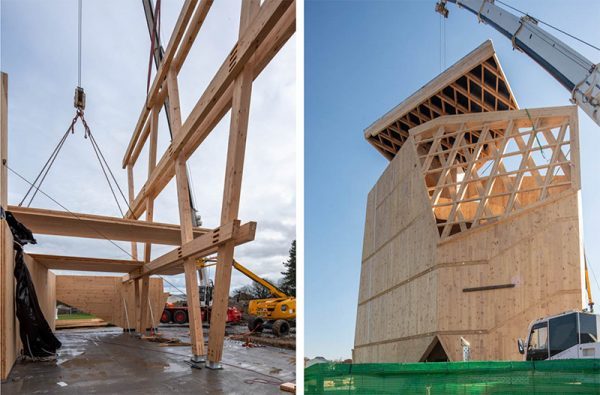
The structure was built with cross-laminated timber (CLT) panels and laminated wood pieces made entirely out of local wood from sustainably managed forest operations (Forest Stewardship Council/FSC-certified). Each part’s meticulous design during the project phase, along with the manufacturing and machining process using CNC technology in the factory, has enabled dry, fast, clean, precise construction, highlighting the system’s potential.
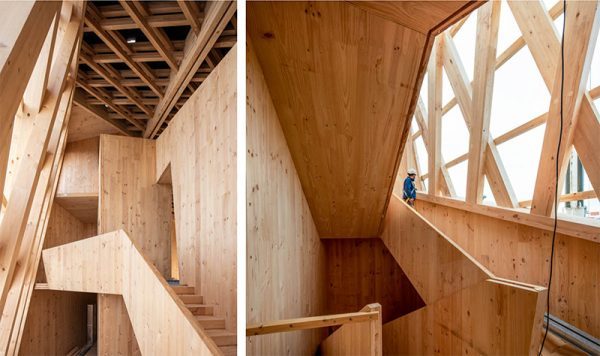
From an energy design point of view, the building combines passive air conditioning strategies, such as galleries using high capacity insulating envelopes, with high-efficiency systems and renewable energy production from photovoltaic panels and a boiler fed by the biomass produced in its scope of action. The design is complemented by centralized management and real-time control system (depending on indoor and outdoor humidity, temperature, and air quality conditions) that will minimize consumption.
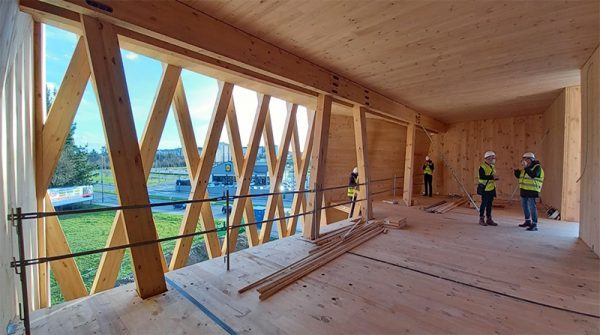
The building will have the Environmental Certification issued by Green Building Council Spain. In addition to evaluating resource management, the certification considers other factors like mobility, indoor environmental quality, social integration, and technical quality.
Using local materials
Using local wood for manufacturing materials and producing energy makes it possible to reduce the carbon footprint in construction and operation phases significantly while favoring the growth of natural carbon sinks and powering the circular bioeconomy. Impulso Verde is the first public building in Galicia built entirely with local wood, thus showing that technological and sustainable construction made with local materials is possible and that the forestry and industrial sectors are ready. The path to a new model is already underway.






There are no comments yet